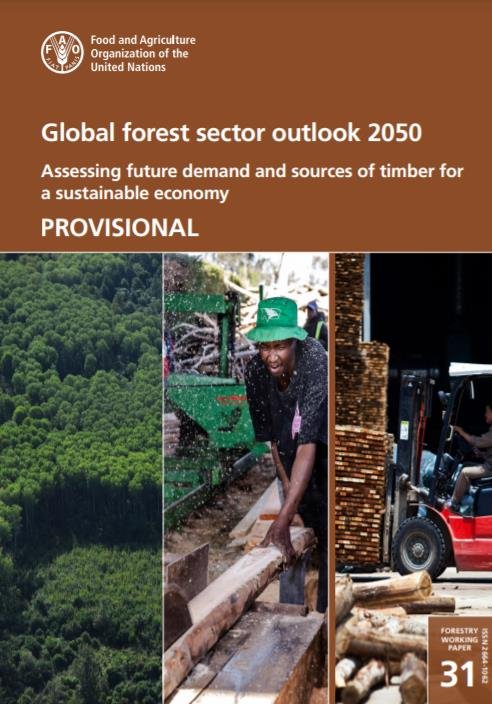- Share this article
- Subscribe to our newsletter
The global forest sector outlook 2050
Consumption of primary processed wood products is expected to grow by 37 per cent up to 2050 in a business-as-usual scenario, according to The global forest sector outlook 2050: Assessing future demand and sources of timber for a sustainable economy, launched during the 26th Session of the Committee on Forestry in early October 2022. The report was jointly produced by the Food and Agriculture Organization of the United Nations (FAO), the International Tropical Timber Organization (ITTO) and the consultancy Unique land use GmbH.
The increase in consumption will be at least eight per cent higher in a bioeconomy scenario when two modern wood products are considered – mass timber and artificial cellulose fibres – for substituting non-renewable materials. In a scenario of a more accelerated transition to the bioeconomy with a stronger participation of these two products, the rise in consumption of primary wood products could reach 23 per cent more than in the business-as-usual scenario.
Wood is renewable, recyclable, climate friendly and versatile and is increasingly being used to replace non-renewable materials. It is a critical material to the efforts to address the global threats to climate, biodiversity and environment caused by the excessive use of non-renewable materials, the report states.
Mass timber and engineered wood products in construction, artificial cellulose fibre for textile production, and more modern forms of wood for energy are the most prominent wood products for large-scale substitution of non-renewable materials.
Meeting future demand for sustainable wood may be achieved by a combination of increased sustainable production in naturally regenerated temperate and boreal forests and in planted forests increasingly in the Global South. But estimates of the concrete contribution of forest types and regions to global timber supply in 2050 are highly uncertain, according to the report.
This demand will need to be met by raising productivity through sustainable forest management in existing forests, and encouraging wood production as part of land restoration programmes and projects. If naturally regenerated forest production remains stable, the planting of at least 33 million hectares of new forests will be needed, the authors point out.
(FAO/ile)





Add a comment
Be the First to Comment